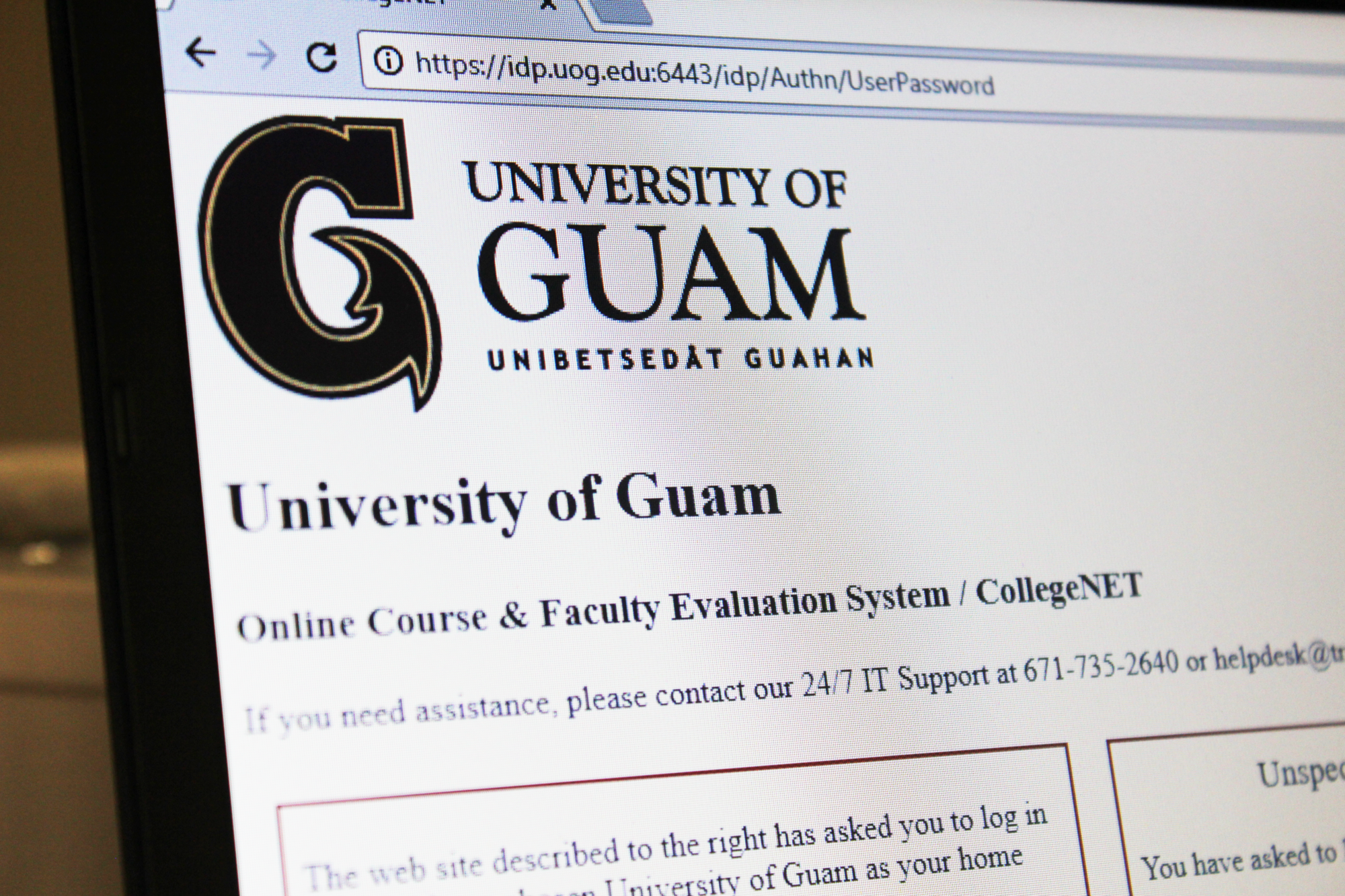In Fall 2014, UOG changed the way it administers student evaluations of courses and faculty. Initially conducted on a paper-and-pencil format, the evaluations were changed to an online system called CollegeNet. Since this conversion, response rates for evaluations have declined, which leaves some in the University alarmed.
“The problem is now that it’s become electronic, students aren’t doing it,” said James Sellmann, Ph.D., dean of the College of Liberal Arts and Social Sciences.
Sellmann estimates that student response rates prior to the change averaged between 90 to 95 percent. Reports from 2014 to 2017 show that figure has dropped to 45 percent.
According to Sellmann, the information from student feedback is used for annual increment and promotion and tenure purposes.
“Professors seem to be getting slightly lower scores now than they used to,” he said. This could be a problem for instructors seeking advancement.
“I think we’re going to have to push more for the electronic version,” Sellmann said.
Jose Cruz, an English instructor at UOG said, “When I was part-time, I would push it [student participation] and say when I become full-time, I can use that as evidence to become full-time.”
Cruz said he uses evaluation results to improve his teaching methods and syllabi course content, as do many other English instructors. But if the decrease in student participation persists, the value of what few responses there are is questionable.
Georgiana Quintanilla, an art major who has attended UOG for five years, has experienced both written and electronic versions.
When asked if she continued to participate in the online evaluations, she replied, “Not always—simply because I or the instructor wasn’t concerned.”
However, Quintanilla finds the online evaluations easier to do and has witnessed instructors improve their teaching methods based on the feedback she provided in the evaluations she did complete.
Cruz gives fellow instructors a possible approach to achieving higher response rates. If his students do not participate in the evaluations, he takes them to the computer lab to complete the evaluations.
Considering the many factors that are affected by student participation, all university instructors may want to take a page out of Cruz’s book.
Anita Borja Enriquez, Ph.D., Senior Vice President of Academic and Student Affairs said, “Conducting evaluations during class time improves participation rates.” She encourages this to faculty.
“It would be good if the students took it seriously and recognize that we really do use it,” Sellmann said.

